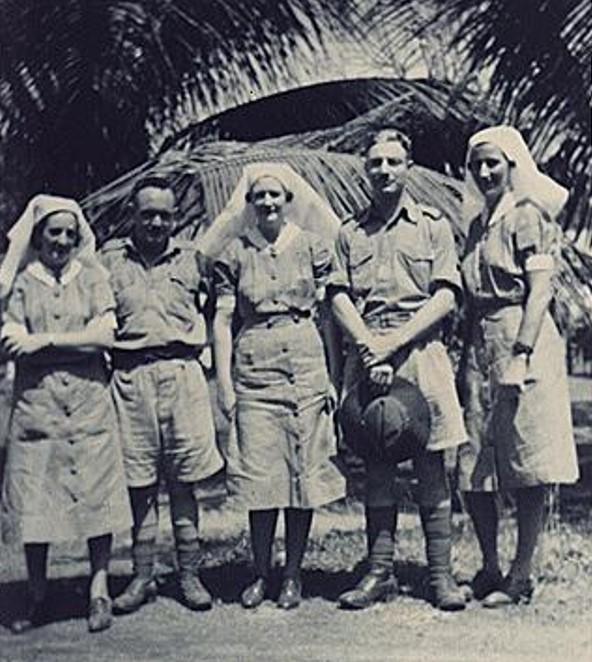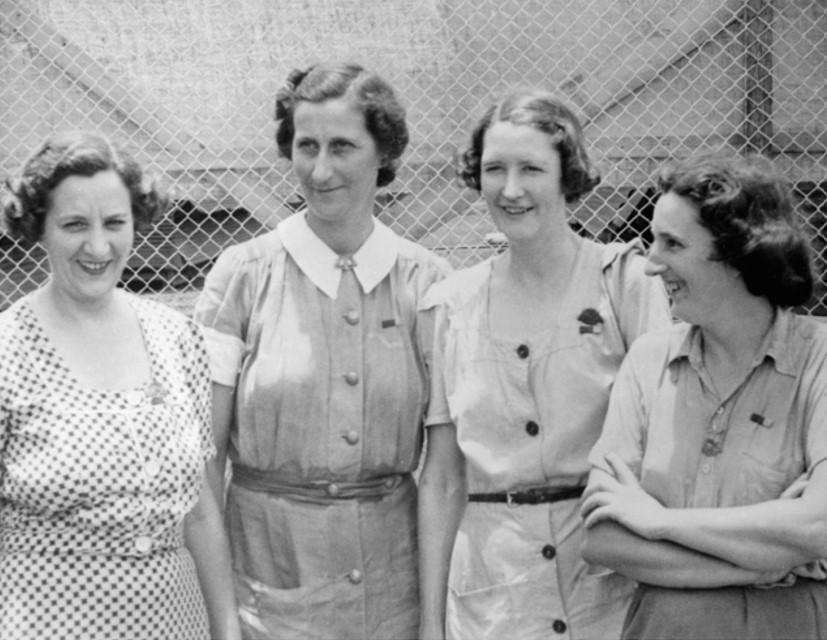
Photo: Members of Lark Force explore New Britain shortly after their arrival. Left to right, Nurse Lorna Whyte, Signalman Thomas Hennessey, who died in the Montevideo Maru, Nurse Mavis Cullen, Gunner Percy Blake, who died as a prisoner on Rabaul in March 1942, and Nurse Kay Parker. Photo courtesy www.angellpro.com.au/rabaul.htm.
Born in Goulburn in NSW on 27 August 1909, Mavis was later schooled at the Presbyterian Ladies’ College at Pymble where she was a boarder until 1928. She trained as a nurse at the Royal Alexandra Hospital for Children (the current Westmead Hospital) and on the outbreak of the war was working at the Yass Hospital under Matron Kay Parker.
On 10 March 1941, Cullen enlisted at Victoria Barracks in Sydney and on 25 April 1941 arrived in New Britain. As she later recalled:
‘We set foot on Rabaul on Anzac Day... I always lived in the Southern districts of Australia and to be in that tropical part was absolutely beautiful. The vegetation, frangipani, hibiscus. I look back now and think how beautiful it was… And then of course everything changed.’
— Cited at www.angellpro.com.au/rabaul.htm
The six nurses became prisoners of the Japanese following the fall of Rabaul. They were shipped to Yokohama in June 1942 where they spent the next three years in captivity.
Although they were not mistreated by their keepers, and all survived their internment, they later recalled their time in Japan as one of constant cold and ever-present hunger.
They were liberated on 4 September 1945 and came home via a POW processing unit in Manila in the Philippines, landing at Mascot airport on 13 September 1945. Cullen was discharged from the army on 1 April 1946 and in 1948 was Mentioned in Despatches for distinguished services rendered at Rabaul in January 1942 and subsequently whilst a prisoner of war.

Photo: AANS nurses at Manila following their liberation. Left to right, Lt Daisy Keast, Captain Kay Parker, Lt Mavis Cullen, Lt Lorna Whyte. AWM 019148.